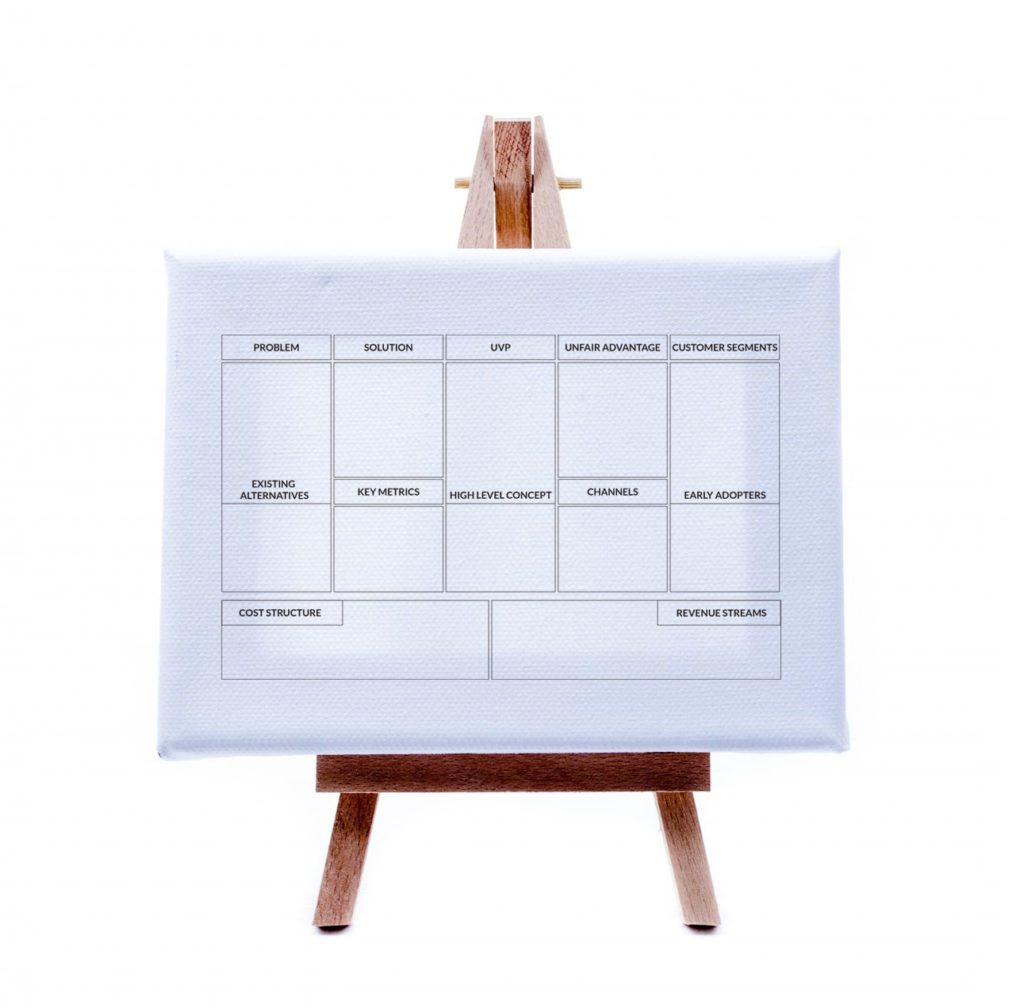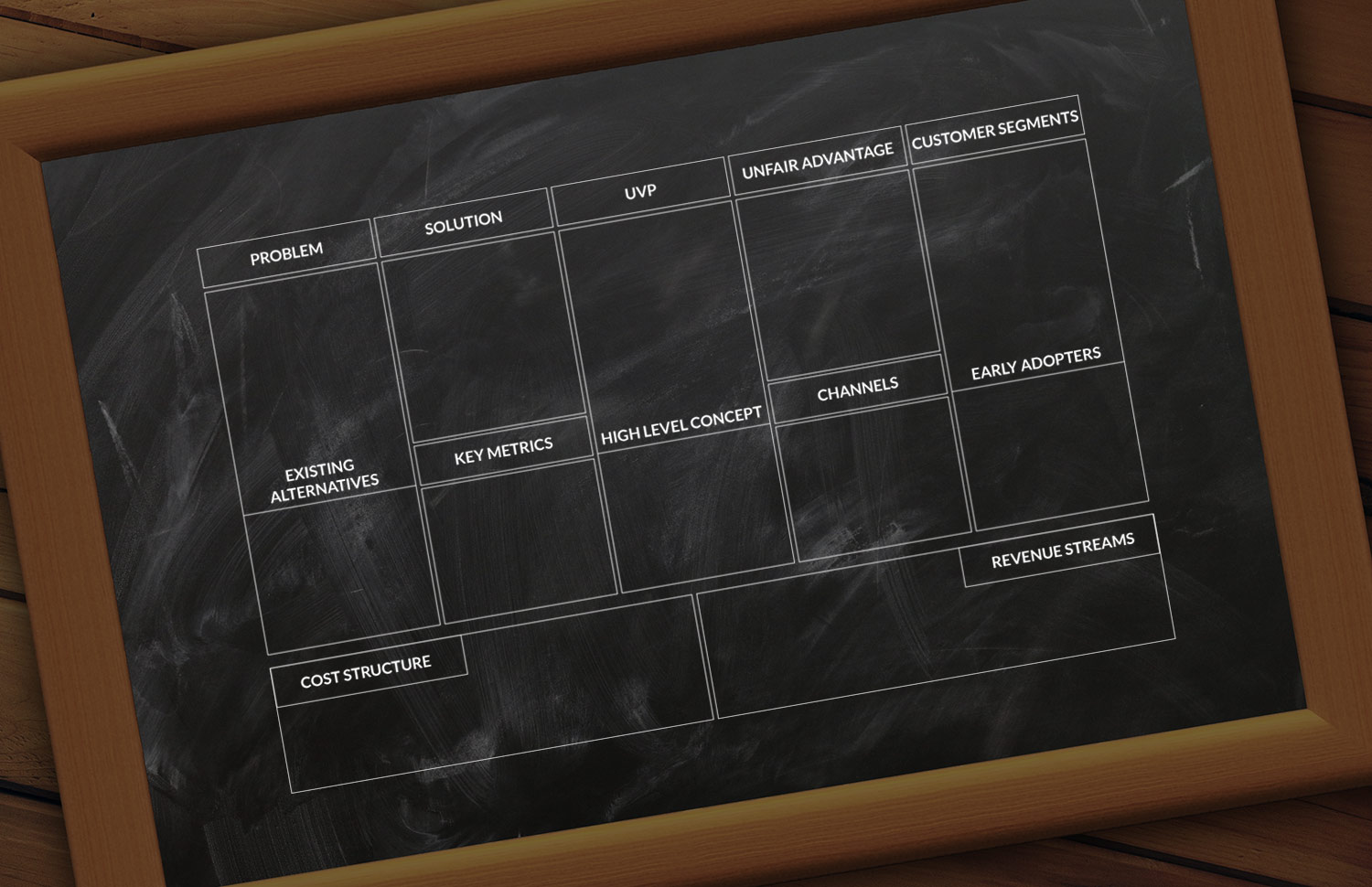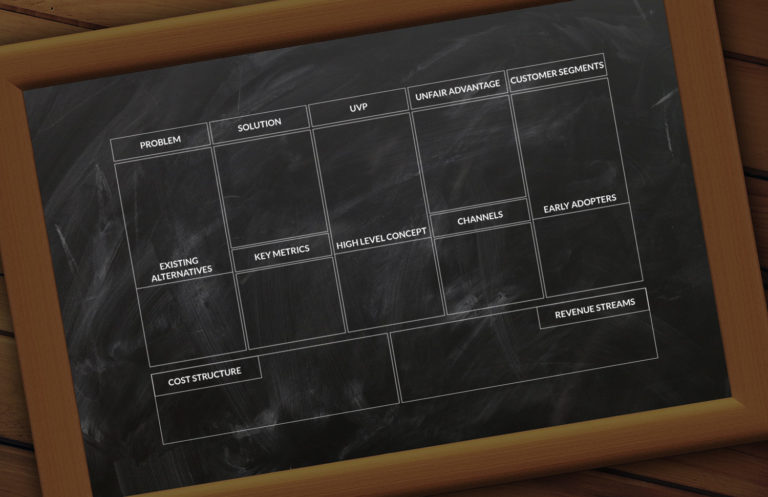Lean Canvas, why it matters?
Behind every successful startup business is a well laid plan, right? Maybe not. The new trend is a lean canvas. The old-school business plan has met its demise because it just can’t keep up with the rapid changes necessary for startup success. After all, one of a startups early goals is dynamic growth. That means […]
Behind every successful startup business is a well laid plan, right? Maybe not. The new trend is a lean canvas. The old-school business plan has met its demise because it just can’t keep up with the rapid changes necessary for startup success. After all, one of a startups early goals is dynamic growth. That means a business plan can quickly become obsolete. A business plan is also created behind a desk as a theory. A lean canvas is created in the trenches, so to speak.
- Attention Span: Reviewing a lean canvas is much more attractive to prospective investors than a typical business plan. Instead of perusing a multi-page document, investors are tasked with a one-page lean canvas. An entrepreneur is able to convey his mission in less than a minute of an investor’s time.
- Exposure: The more eyes on the canvas, the more opportunities to reach the right person who wants to invest in your business. It is so much easier to share a single page document than a large file.
- Time Is Money: In any business, that old adage is true. When problems arise, a business wants to solve their problems quickly and efficiently. A lean canvas offers a one-page model a business can use that offers problem solving at record pace. Considering that business experts at Harvard report that 75% of startups fail, it is important to be equipped with the best problem-solving tools.
-
Methodology: Business plans of old often took weeks of preparation. They were elaborate plans that laid out a path to success. But, judging by the numbers out of Harvard, it seems that such detailed planning did not really work out that well. The methodology of a lean canvas approach allows for more creativity, experimentation, if you will. Flexibility is integrated into a lean canvas because it can be adjusted according to customer feedback. Instead of being a soothsayer, projecting what you expect to happen with a business plan, entrepreneurs become a mirror, reflecting customer feedback on a canvas.
- Perfection Fallacy: A business plan’s weakness lay in its self-confidence that if the proposed path is followed, the business simply cannot fail. The lean canvas turns this perspective on its head. The lean canvas says, “Hey, I expect bumps in the road. I even expect some of my ideas to bomb. But I have a quick response plan that creates fluidity within my business. I can adjust and recover quickly.”
- Years To Launch: It has not been uncommon for a business or product idea to spend years being researched. That is time wasted and revenue lost. A product or service could have been engaging consumers and evolving, becoming more relevant, allowing feedback to shape it into exactly what customers desire. Master plans fail because they lack this real-world input.

Lean Canvas Success Kit:
The adaptability of a lean canvas is modeled after the most successful startups. Startups that survive do so because they are able to move forward quickly after experiencing a failure. They adjust, adapt, and are continually learning. A lean canvas has three tools, or principles, in its kit:
- Untested Theories: On day one, the entrepreneur is putting into action untested theories.
- Feedback: These theories will be tested through customer interaction, development related directly through customer feedback on the product or service offered.
- Agile Development: This is the concept of customer feedback driven development. By reacting directly to customer response, the evolution of the product or service is dynamic, rather than changing slowly and incrementally over time.
In conclusion:
The lean canvas method is gaining ground. More than two dozen universities, like Harvard Business School, Colombia and University of California Berkeley, are teaching future entrepreneurs this new startup methodology. Companies like Toyota Production System and General Electric have been making the shift toward lean start-up. This is what Pollenizer start-up mentor, Claudia Barrica-Larriviere, has to say about lean canvases:
“The beauty of the lean canvas is that it can be used in a hundred ways: it’s the Swiss Army knife of startup tool.”
By following lean canvas principles, startups are experiencing fewer failures. If you are ready to crush the competition and learn more about the process, please contact us.
Archives by Month:
March
- Why People Buy? What key factors determine they would do business with you?
- Special Guest – Raj Smriti
- Let’s catch the Thief that is stealing your success



February
January
- The 5 Sins of Marketing to avoid for success
- How to charge what you’re worth?
- Ever heard “Content is King” – Why ?



July
- 20 Myths About Business Success Revealed
- 4 Ways to Stop Burning Money in Ads but Still Get More Customers?
- What’s the Key to Creating Successful Conversion Content? and Grow Sales!
- Inbound Marketing – Perfect For People Who Hate Selling
- The Worst Advice We’ve Ever Heard About Sales





March
- What is Buyer’s Journey & Why it matters for your business?
- 4 Reasons why your Marketing efforts are not paying off or converting?
- The Benefits of Buyer Personas and How to Get Started?
- Why We Don’t Sell Any Project Without Discovery?




February
- 10 signs your website might be ready for an upgrade
- Why your business needs a technical co-founder…and where to find one?


January
December
- Startups Business – Determining if Your Business is Ready for Funding
- Five steps to attract investors
- How to Make a Successful Startup Business Plan.
- 10 Common Mistakes New Businesses Make




November
- 10 Crucial Errors to Avoid for Startup Businesses
- Spread the Word: 4 Ways to Enhance Your Online Presence
- $100 website vs a $10,000 website? What’s the difference?
- Brochure Website vs. Sales Person Website – What Really Works for You?
- $10,000?! For a website? Is a website worth that much ?












